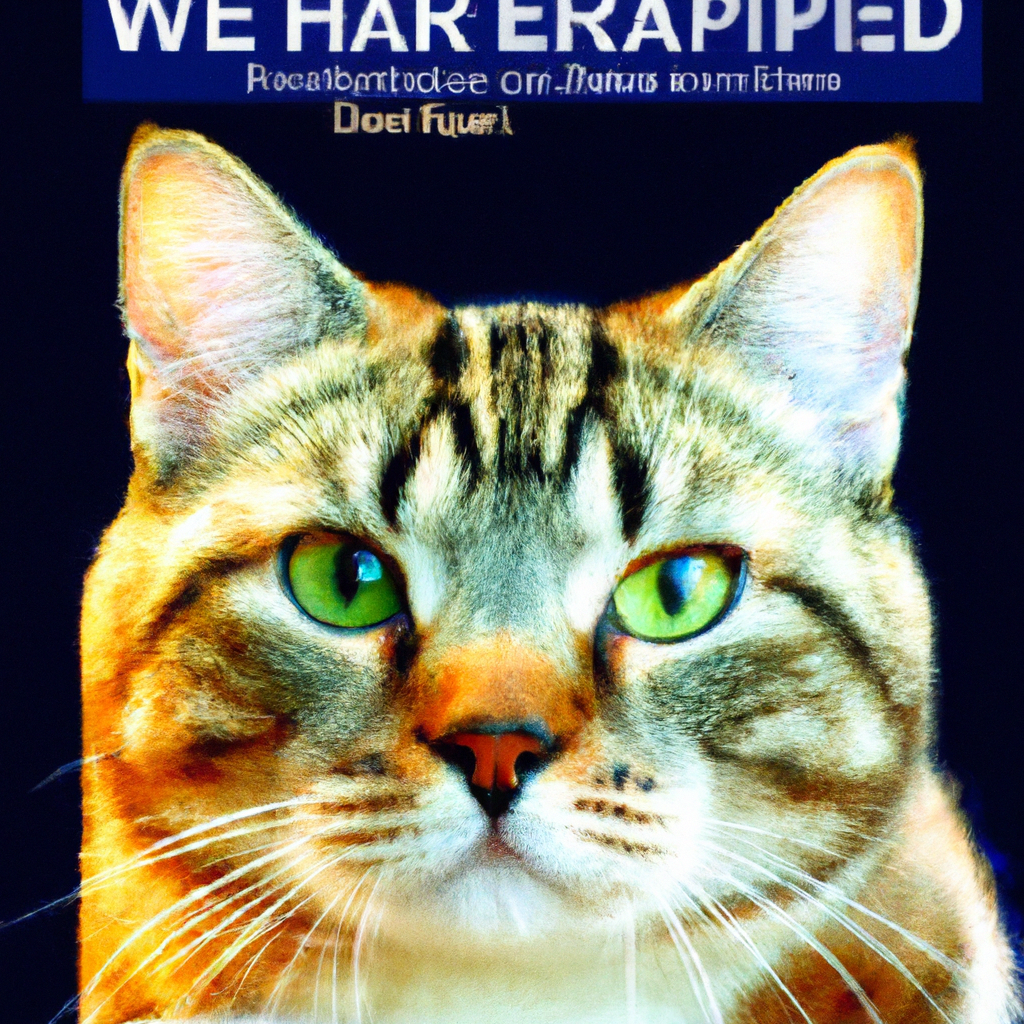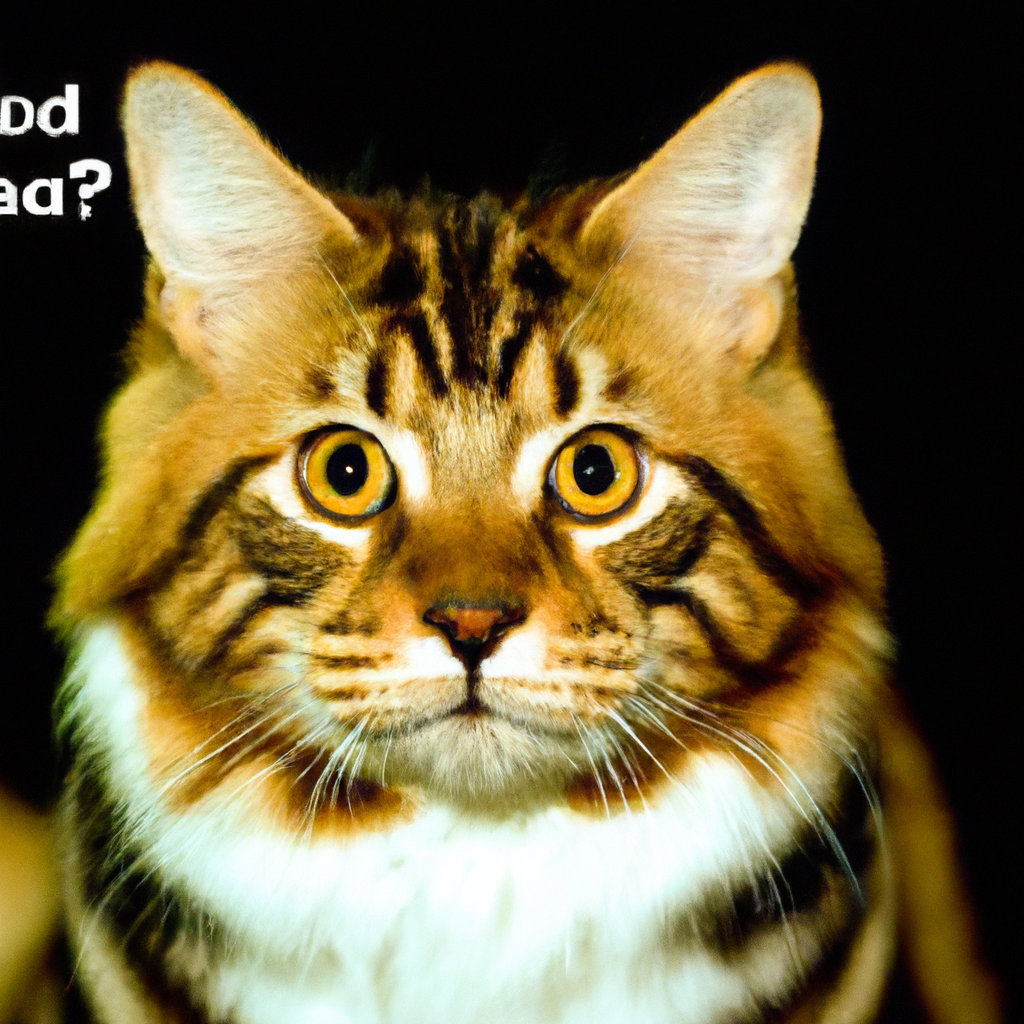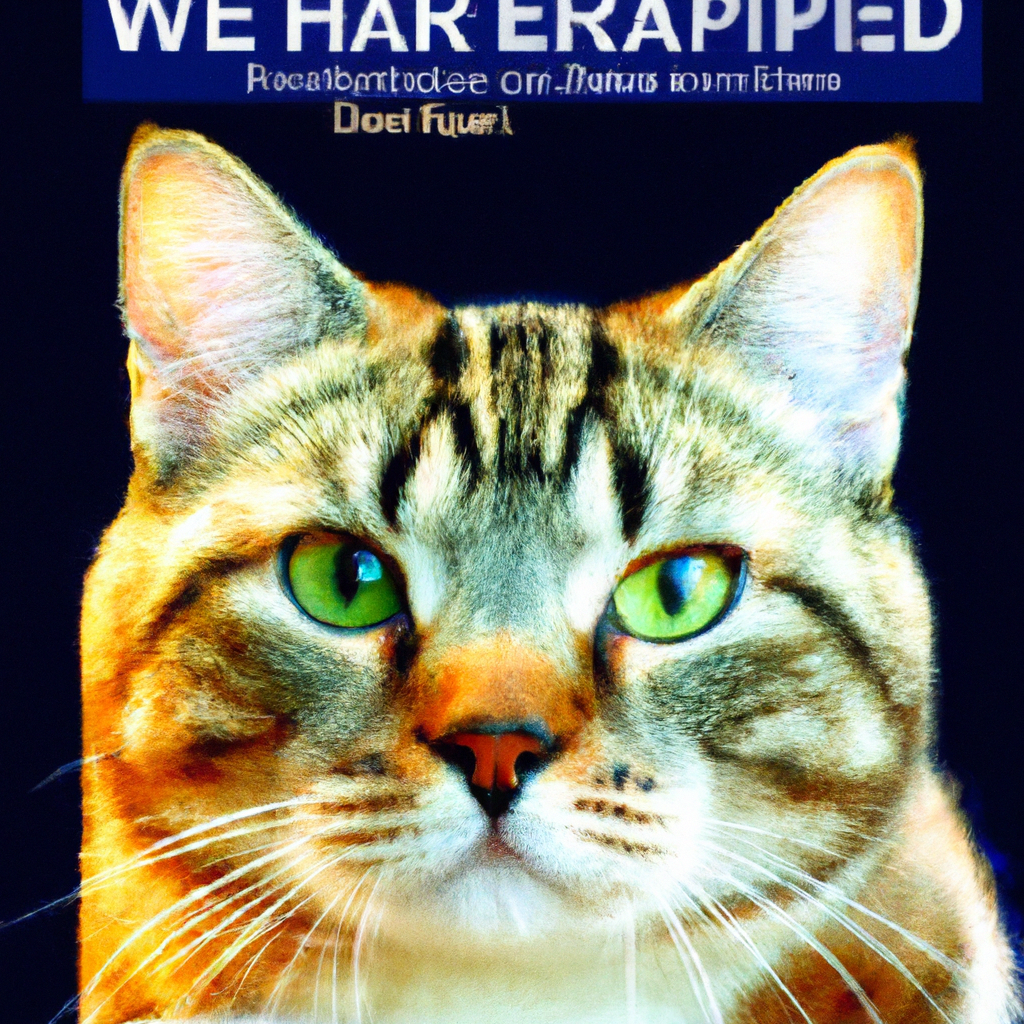Have you ever found yourself wondering about the breed of your beloved feline companion? Curiosity piqued, you observe their unique traits, enticing patterns, and mesmerizing eyes, and begin to wonder, “What breed is my cat?” Whether you have a sleek Siamese, a fluffy Maine Coon, or a mysterious mixed breed, this article aims to shed light on the captivating world of cat breeds, helping you uncover the fascinating origins and characteristics of your purrfect companion. Whether a new cat owner or a long-time enthusiast, read on to delve into the realm of feline breed diversity.


Factors to Consider
When trying to determine the breed of your cat, there are several factors you should take into consideration. These factors include physical appearance, behavioral traits, genetic background, and pedigree evaluation. Each of these factors can provide valuable clues that can help identify your cat’s breed.
Physical Appearance
The physical appearance of a cat is often one of the first things people notice. This includes the length and color of the coat, eye color, body structure, and facial features. By examining these physical characteristics, you can start to narrow down the potential breeds that your cat may belong to.
Coat Length
One of the most obvious physical characteristics is the length of the cat’s coat. Cats can have either a short or long coat, and this can vary greatly between different breeds. For example, the Maine Coon is known for its long, thick fur, while the Siamese has a short, sleek coat.
Coat Color and Pattern
Another important aspect of a cat’s physical appearance is its coat color and pattern. Different breeds have specific coat colors and patterns that are associated with them. For example, the Bengal breed is known for its distinctive spotted coat, while the Persian breed is often recognized for its long, luxurious coat in a variety of colors.
Eye Color
Eye color can also provide clues about a cat’s breed. Certain breeds, like the Siamese, are known for their striking blue eyes. Other breeds, such as the Russian Blue, often have green eyes. By noting the color of your cat’s eyes, you may be able to narrow down the possibilities.
Body Structure
The body structure of a cat can vary greatly depending on its breed. Some breeds, like the Maine Coon, are large and muscular, while others, like the Siamese, are more slender and elegant. By observing the body structure of your cat, you can start to identify certain breed characteristics.
Facial Features
Facial features can also play a role in determining a cat’s breed. For example, the Persian breed is known for its round face and flat nose, while the Bengal breed often has a more wild and exotic-looking face. Paying attention to your cat’s facial features can help narrow down the possibilities.
Behavioral Traits
In addition to physical appearance, behavioral traits can also give you clues about your cat’s breed. Different breeds have distinct personalities and temperaments. By observing your cat’s behavior, you can gain valuable insights into its breed heritage.
Genetic Background
Genetics play a significant role in determining a cat’s breed. Understanding your cat’s genetic background can provide valuable information about its breed heritage. While DNA testing can provide accurate results, a thorough understanding of your cat’s pedigree and lineage can also offer insights into its breed.
Pedigree Evaluation
Pedigree evaluation involves examining the ancestry and lineage of a cat to determine its breed heritage. By studying the cat’s pedigree, which is essentially a family tree, you can trace back its lineage and identify specific breed characteristics. Pedigree evaluation can be a helpful tool in determining your cat’s breed.
Physical Characteristics
When trying to determine your cat’s breed, it’s important to carefully observe its physical characteristics. These characteristics can provide valuable insights into its breed heritage.
Coat Length
The length of a cat’s coat is one of the most noticeable physical characteristics. Cats can have either a short or long coat, and this can vary greatly between different breeds. For example, cats with short coats include breeds like the Siamese and the Abyssinian, while the Maine Coon is known for its long, thick fur.
Coat Color and Pattern
Coat color and pattern is another important physical characteristic to consider. Different cat breeds have specific coat colors and patterns that are associated with them. For example, the Bengal breed is known for its distinctive spotted or marbled coat, while the Persian breed can come in a variety of solid colors.
Eye Color
The color of a cat’s eyes can also provide valuable information about its breed. Some breeds, like the Siamese, are known for their striking blue eyes, while other breeds, like the British Shorthair, typically have copper or gold eyes. Observing the color of your cat’s eyes can help narrow down possible breed options.
Body Structure
The body structure of a cat can vary greatly between breeds. Some cats are large and muscular, while others are more slender and elegant. For example, the Maine Coon breed is known for its substantial size and muscular build, while the Siamese breed is more slender and graceful in appearance.
Facial Features
Facial features can also provide clues about a cat’s breed. Different breeds have distinct facial features that can help identify their breed heritage. For example, the Persian breed is known for its round face and flat nose, while the Bengal breed often has a more wild and exotic-looking face.
Breeds with Distinctive Features
Certain cat breeds have distinctive features that make them easily recognizable. Familiarizing yourself with these breeds and their unique characteristics can help you identify certain traits in your own cat.
Siamese
The Siamese breed is known for its striking blue eyes and sleek short coat. They have a slender body structure and are often vocal and sociable cats. Siamese cats are attention seekers and enjoy being at the center of attention.
Maine Coon
Maine Coon cats are recognized for their large size and long, thick fur. They have tufted ears and a bushy tail, giving them a majestic appearance. Maine Coon cats are generally friendly and social, making them beloved family pets.
Persian
Persian cats are famous for their long, luxurious coats and round faces. Their noses are typically flat, and they have large, expressive eyes. Persians are known for their calm and gentle personalities, and they enjoy a relaxed and peaceful environment.
Bengal
Bengal cats are known for their distinctive spotted or marbled coat patterns, resembling those of a wild leopard. They have an athletic build and are highly active and playful. Bengal cats require plenty of mental and physical stimulation to thrive.
Sphynx
The Sphynx breed is unique due to its lack of fur. These hairless cats have a wrinkled skin and large ears. Despite their lack of fur, Sphynx cats are sociable, affectionate, and love attention.
Russian Blue
Russian Blue cats have a short blue-gray coat and striking green eyes. They have a graceful and elegant body structure. Russian Blues are known for their intelligence and reserved nature, often forming strong bonds with their owners.
Ragdoll
Ragdolls are known for their soft, semi-longhair coat and striking blue eyes. They have a large, muscular body structure and are known for their docile and affectionate nature. Ragdolls are often described as “floppy” and enjoy being held and cuddled.
British Shorthair
British Shorthair cats have a dense, plush coat and round face. They come in a variety of colors, with the most iconic being the “British Blue,” a solid blue-gray color. British Shorthairs are known for their calm and easygoing personalities.
Abyssinian
Abyssinian cats have a short, ticked coat, which gives them a unique and striking appearance. They have a sleek body structure and are highly active and curious. Abyssinians are known for their playful and affectionate nature.
Savannah
Savannah cats are a cross between a domestic cat and a serval, a wild African cat. They have a distinctive coat with spots or marbled patterns. Savannah cats are highly energetic and require plenty of mental and physical stimulation.


Mixed Breed Cats
While purebred cats have distinct breed characteristics, mixed breed cats can be a delightful combination of various breeds. Understanding mixed breeds and their common traits can help you appreciate the uniqueness of your own mixed breed cat.
Understanding Mixed Breeds
Mixed breed cats, often referred to as domestic cats, are the result of breeding between cats of different breeds or unknown ancestry. While their exact lineage may be uncertain, mixed breed cats can exhibit a wide range of physical and behavioral traits.
Domestic Shorthair
A domestic shorthair cat typically has a short, low-maintenance coat and can come in a variety of colors and patterns. They have a diverse genetic background and can display a combination of traits from various breeds. Domestic shorthairs are often known for their friendly and adaptable nature.
Domestic Longhair
Domestic longhair cats have a long, flowing coat that requires regular grooming to prevent matting. They come in various colors and patterns and can have a combination of traits from different breeds. Domestic longhairs are generally friendly and make excellent companions.
Common Traits in Mixed Breeds
Mixed breed cats can inherit a mix of physical and behavioral traits from their various ancestral breeds. They can have a combination of coat lengths, colors, and patterns, as well as a range of temperaments and personalities. Each mixed breed cat is unique, reflecting its own blend of genetic influences.
Behavioral Patterns
The behavior of a cat can provide valuable insights into its breed heritage. Different breeds have distinct behavioral patterns and traits that can manifest in individual cats.
Activity Level
The activity level of a cat refers to how much physical exercise and mental stimulation it requires. Some breeds, like the Bengal, are highly active and need plenty of playtime to keep them stimulated. On the other hand, breeds like the British Shorthair tend to be more laid-back and require moderate exercise.
Sociability
Sociability refers to a cat’s willingness to interact with humans and other animals. Some breeds, like the Siamese and Ragdoll, are known for their social nature and enjoy human companionship. Others, like the Russian Blue, can be more reserved and independent.
Playfulness
Playfulness is an important factor to consider when determining a cat’s breed. Some breeds, like the Bengal and Savannah, are highly energetic and enjoy interactive play. Other breeds, like the Maine Coon, may have bursts of playfulness but are generally more laid-back.
Vocalization
Vocalization refers to a cat’s tendency to vocalize, including meowing, purring, and chirping. Breeds like the Siamese are known for their loud and vocal nature, while others, like the British Shorthair, are generally quieter. Pay attention to your cat’s vocalization patterns to get a sense of its breed heritage.
Intelligence
Intelligence can vary greatly between cat breeds. Some breeds, like the Abyssinian and Bengal, are highly intelligent and require plenty of mental stimulation. Other breeds, like the Persian, may be more laid-back and less interested in puzzles and problem-solving.
Medical Indicators
When trying to determine your cat’s breed, it’s important to consider any medical indicators that may be present. These can include physical abnormalities, health issues, and genetic disorders.
Physical Abnormalities
Certain breeds are more prone to certain physical abnormalities. For example, Persian cats are known to have a predisposition to breathing difficulties due to their flat faces. Maine Coon cats can sometimes have hip dysplasia, a condition that affects the hip joints. Familiarize yourself with common physical abnormalities associated with different breeds to gain more insight into your cat’s breed heritage.
Health Issues
Different breeds can have varying health issues that are more common within their breed. Some breeds may be more prone to certain genetic disorders or diseases. For example, Siamese cats can be prone to dental issues, and Maine Coons may have an increased risk of developing heart disease. By monitoring your cat’s health and discussing any concerns with your veterinarian, you can gain a better understanding of its breed and potential health risks.
Genetic Disorders
Certain genetic disorders can be more prevalent in certain cat breeds. These disorders can range from inherited conditions to chromosomal abnormalities. Genetic testing can be a helpful tool in identifying any potential genetic disorders in your cat and understanding its breed heritage.
Genetic Testing
Genetic testing can provide valuable information about a cat’s breed heritage. By analyzing the cat’s DNA, specific breed markers can be identified, shedding light on its genetic background.
DNA Testing for Cat Breeds
DNA testing for cat breeds works by comparing a cat’s DNA to a database of known breed markers. It can accurately identify the proportion of each breed present in a mixed breed cat or confirm the breed of a purebred cat. DNA testing can provide a comprehensive breakdown of a cat’s breed composition, offering valuable insights into its ancestry.
Benefits of Genetic Testing
Genetic testing can provide certainty and confirmation about a cat’s breed heritage. It can also help predict potential health risks and genetic disorders associated with specific breeds. Additionally, genetic testing can offer peace of mind for those who are curious about their cat’s ancestry.
Limitations of Genetic Testing
While genetic testing can be a helpful tool, it does have its limitations. Some cat breeds may share common genetic markers, leading to potential inaccuracies in the results. Additionally, genetic testing cannot account for recent mixed breed ancestry, as it primarily focuses on breed heritage.
Pedigree Evaluation
Pedigree evaluation involves examining a cat’s lineage and ancestry to determine its breed heritage. By tracing back a cat’s pedigree, valuable information can be uncovered.
Understanding Pedigrees
A pedigree is essentially a family tree for cats. It documents the lineage and ancestry of a cat, providing important information about its breed heritage. By understanding pedigrees, you can identify specific breed characteristics and traits present in a cat.
Pedigree Certificates
Pedigree certificates are official documents that provide information about a cat’s pedigree. They outline the cat’s lineage, including the names and registration numbers of its ancestors. Pedigree certificates can be obtained from reputable cat breeders and cat associations.
Pedigree Analysis
Analyzing a cat’s pedigree involves studying its lineage and tracing back its ancestry. By identifying specific breed markers in the pedigree, you can gain a better understanding of a cat’s breed heritage. Pedigree analysis can be a helpful tool in determining the breed of a cat.
Consult an Expert
If you’re still unsure about your cat’s breed after considering physical appearance, behavioral traits, genetics, and pedigree analysis, it may be beneficial to consult an expert. The following professionals can provide valuable insights and guidance.
Veterinarian
Your veterinarian is a knowledgeable resource when it comes to identifying cat breeds. They can help assess physical characteristics, provide guidance on genetic testing, and offer advice based on their experience and expertise.
Cat Breeders
Cat breeders specialize in specific breeds and have in-depth knowledge of breed characteristics. They can offer valuable insights and assistance in identifying your cat’s breed based on their expertise in breeding and working with specific breeds.
Cat Shows and Fancier Associations
Cat shows and fancier associations are events and organizations dedicated to showcasing and promoting cat breeds. These events provide an opportunity to learn about various breeds and interact with breeders and experts. Attending cat shows and connecting with fancier associations can be a helpful way to gain knowledge and guidance in identifying your cat’s breed.
Conclusion
Determining your cat’s breed can be an exciting journey filled with exploration and curiosity. By considering physical appearance, behavioral traits, genetic background, and pedigree evaluation, you can gather valuable clues about your cat’s breed heritage. Appreciate the uniqueness of your cat, whether it’s a purebred with distinctive features or a mixed breed with a delightful combination of traits. Remember, what truly matters is the love and companionship your cat brings into your life, regardless of its breed.

